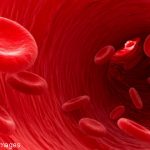If there is concern for pulmonary hemorrhage or rapidly progressive glomerulonephritis [in patients with AAV], there should be no delay in treating with glucocorticoids.
GPA & MPA
Another important study, the RITAZAREM trial, examined 190 patients with granulomatosis with polyangiitis (GPA) or microscopic polyangiitis (MPA) with relapse treated with intravenous rituximab at a dose of 375 mg/m2 weekly for four consecutive weeks. Patients who achieved remission at four months were randomized to treatment with either 1 g of intravenous rituximab every four months or 2 mg/kg/day of azathioprine from months 4 to 24. The study demonstrated that rituximab was superior to azathioprine for preventing disease relapse, but it is notable that the rate of relapse accelerated in both arms once either agent was stopped at 24 months.2
Glucocorticoids
On the subject of glucocorticoids in the treatment of AAV, Dr. Merkel did not mince words in stating this class of medication is key to saving patients’ lives and preventing end-stage renal disease (ESRD) in the short term. If there is concern for pulmonary hemorrhage or rapidly progressive glomerulonephritis, there should be no delay in treating with glucocorticoids. However, there is excitement in the field of vasculitis about steroid-sparing strategies for AAV.
The PEXIVAS trial study sought to answer two main questions: 1) Does plasma exchange reduce death from any cause or ESRD, and 2) is a reduced-dose oral glucocorticoid regimen non-inferior to a standard-dose regimen in terms of death from any cause or ESRD?
In this randomized controlled trial, 700 patients with severe AAV treated with cyclophosphamide or rituximab and intravenous methylprednisolone were randomized to receive either adjuvant plasma exchange or no such therapy. Researchers found no difference in mortality or ESRD rates in the group of patients that received plasma exchange vs. the group that did not receive plasma exchange. In addition, reduced-dose glucocorticoids were non-inferior to the standard-dose regimen in the primary outcome, which was a composite of ESRD or death, with ESRD being defined as 12 weeks of continuous dialysis or need for kidney transplant.3
In the ADVOCATE trial, treatment with the C5a receptor inhibitor avacopan was compared with prednisone in patients with AAV who were being treated with rituximab or cyclophosphamide/azathioprine. The patient population included patients with GPA and MPA who were positive for anti-proteinase-3 (PR3) ANCA or myeloperoxidase (MPO) ANCA and had active, new-onset or relapsing vasculitis with moderate to high disease activity. Patients were then randomized in a 1:1 ratio to receive 30 mg of oral avacopan twice daily or oral prednisone on a tapering schedule. In this study, avacopan was found to reduce glucocorticoid use and toxicity by eliminating the need for extended daily glucocorticoid therapy. The medication was also found to improve disease control and recovery of renal function.4

